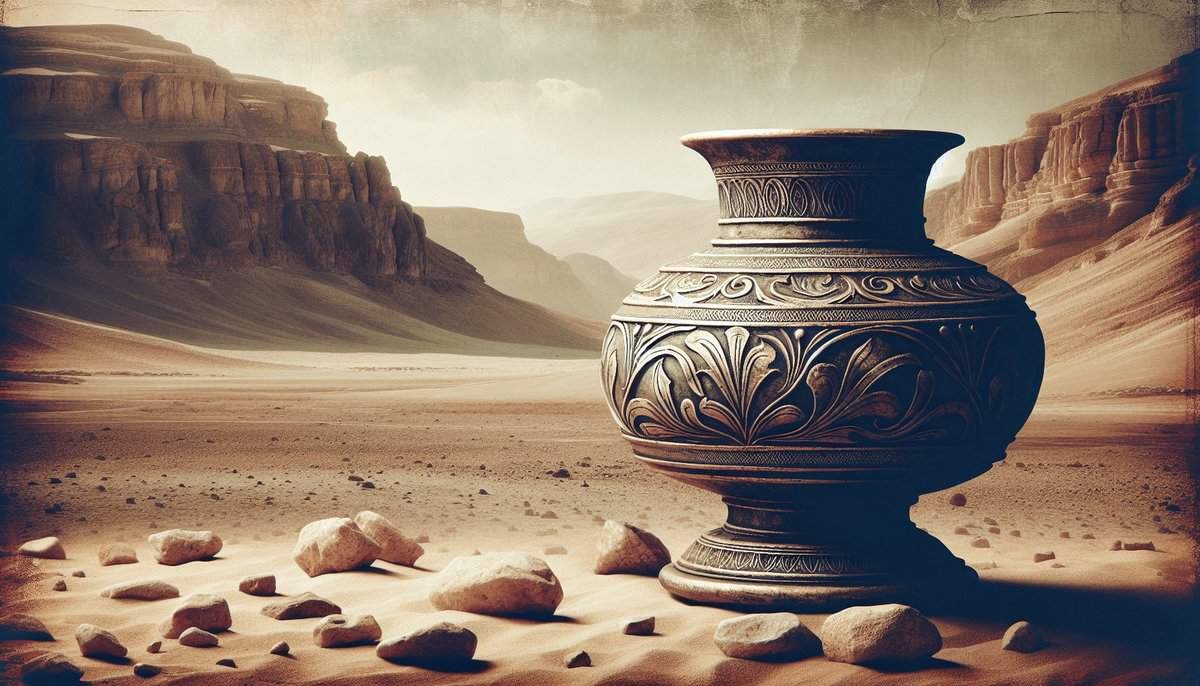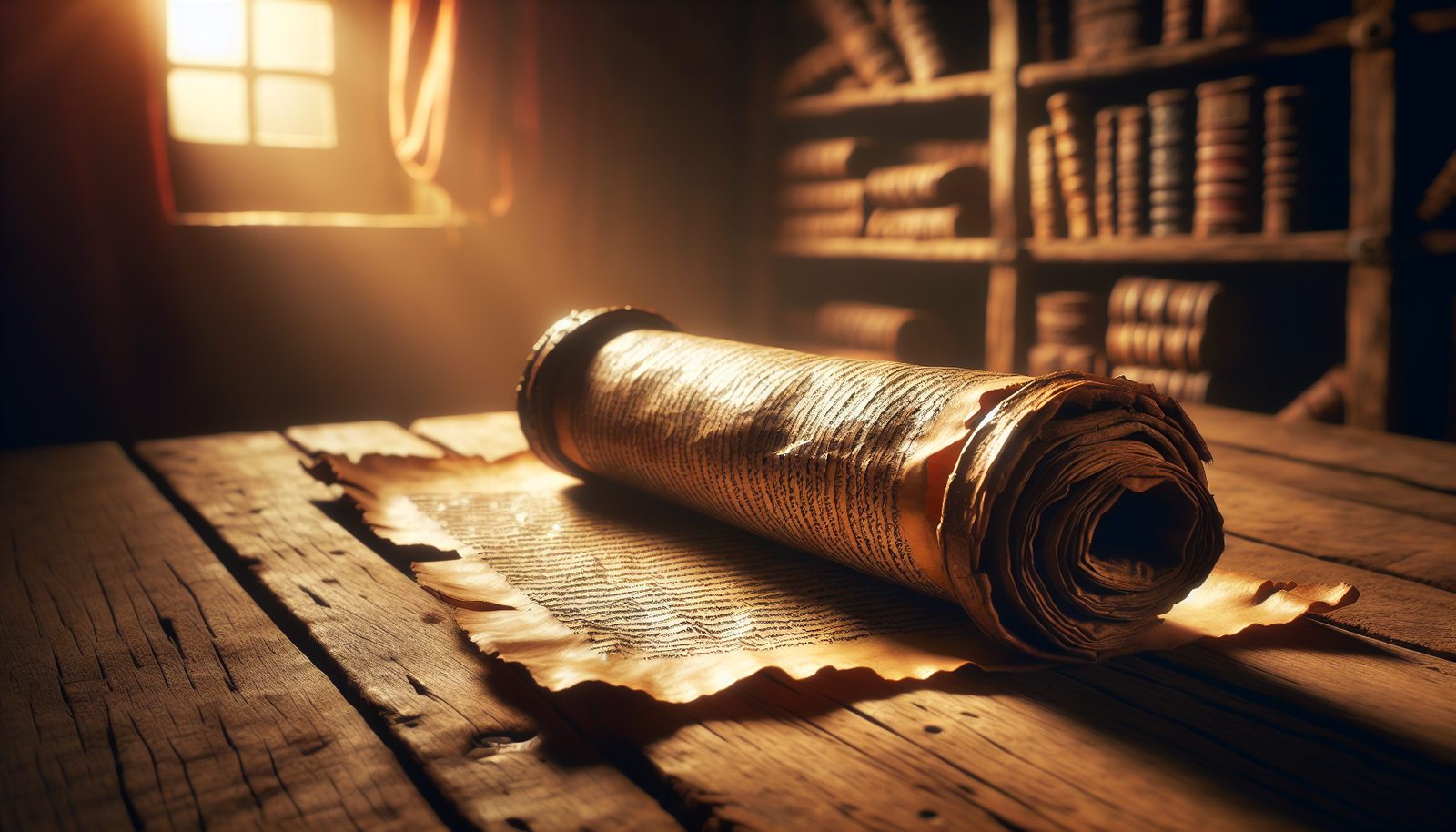What do you think happens when archaeology and biblical stories intertwine in the harsh landscapes of the ancient world? You might be surprised at how much they can reveal. The Estate Pot from Qumran is a fascinating artifact that offers a glimpse into the narratives that have shaped religious thought and communal identity among the desert dwellers—especially regarding the Exodus story.

The Enigmatic Estate Pot: What Is It?
Let’s start with the basics. The Estate Pot is among the many artifacts excavated from the Qumran site, which, as you may know, is nestled in the arid landscapes near the Dead Sea. This pot, with its unique design and historical significance, has sparked numerous debates among scholars and archaeologists. But it’s not just a piece of pottery; it represents an entire way of life and belief system that resonates through centuries of history.
A Brief History of Qumran
Before we dive deep into the specifics of the Estate Pot, let’s set the stage by discussing Qumran itself. This site was inhabited by a mysterious group often associated with the Essenes, a Jewish sect that thrived in the late Second Temple period. This was a time of incredible upheaval, marked by political instability and spiritual exploration. The residents of Qumran were not only artisans but also religious scholars dedicated to preserving and interpreting Jewish texts.
The Purpose of the Pot
Now, what about the Estate Pot in particular? It was primarily used for storage and probably for communal gatherings, giving insight into both the daily life and communal practices of the Qumran community. The design and craftsmanship of the pot indicate a certain level of skill and importance; it wasn’t just your run-of-the-mill clay pot.
The cultural and religious significance of such items cannot be understated. It played a role in their rituals and daily living, framing the social experience within the community.
The Exodus: A Central Narrative
As we move along, let’s look at the wider narrative context. The Exodus is a foundational story in Judaic and Christian traditions. Most of you might be familiar with its themes of liberation, divine intervention, and covenant. This narrative recounts the liberation of the Israelites from Egyptian bondage, symbolizing not just a physical escape but a spiritual awakening.
Textual References to the Exodus
The story of the Exodus is detailed in the Book of Exodus, particularly in chapters 12-14, where one can read about the ten plagues and the parting of the Red Sea. These moments are pivotal, serving as powerful metaphors for struggle, faith, and perseverance.
Key Textual Insights:
- The Plagues: Each plague represents a challenge and tests the faith of the Israelites.
- The Passover: This pivotal moment marks the transition from slavery to freedom, underscoring the concept of divine protection.
- The Pillars of Cloud and Fire: These symbolize God’s guidance, reinforcing the belief in divine providence.
The residents of Qumran viewed the Exodus not merely as an ancient event but as an ongoing saga that shaped their identity and community ethos.

The Link Between the Pot and the Exodus
Now, let’s connect the dots. You may wonder how a simple pot resonates with the grand story of Exodus. Well, it’s all about symbolism and shared experience.
Rituals and Communal Identity
The Qumran community likely celebrated rituals that evoked themes from the Exodus narrative. The Estate Pot could have been a central piece in these gatherings, used to serve food or drink during meals that commemorate their collective memory of liberation and divine intervention.
Pottery and Symbolism:
- Material Culture: Artifacts like the Estate Pot reflect shared belief systems and communal memory.
- Rituals: Specific gatherings around shared meals mimic the communal aspects of the Exodus, reinforcing collective identity.
This kind of symbolic alignment with the Exodus narrative speaks volumes about how the desert dwellers viewed their own existence in relation to divine history.
Archaeological Findings Supporting the Link
You might appreciate learning that various archaeological findings bolster the idea that the Qumran community placed great emphasis on their identity linked to the Exodus. Excavations have uncovered not just pottery but also scrolls that discuss themes related to liberation and the idea of covenant, which are integral to the Exodus story.
Table: Key Archaeological Findings in Qumran
| Artifact | Description | Significance |
|---|---|---|
| Estate Pot | Storage/serving pot | Reflects communal gatherings and rituals |
| Dead Sea Scrolls | Ancient manuscripts | Contain teachings related to Exodus narratives |
| Water Cisterns | Ingenious water-storage systems | Essential for ritual purity and community life |
These artifacts illustrate a lifestyle that was not just about survival but enriched by a profound connection to their history and beliefs.
Theological Implications
What does all this mean for broader theological discussions? The narratives surrounding the Exodus extend far beyond historical accounts. They inform doctrine, ethical frameworks, and liturgical practices.
The Role of Memory in Theology
Memory is a critical component of faith. The Qumran community likely regarded the stories related to the Exodus as essential to their identity and survival. By linking their lives to the past, they reaffirmed their faith and commitment to their belief system.
The Power of Storytelling:
- Cultural Continuity: Storytelling keeps traditions alive, ensuring that key events and lessons are passed down through generations.
- Identity Formation: Understanding these narratives helps shape group identity and instills a sense of belonging.
Every time the community gathered around their Estate Pot, they were not just sharing a meal; they were participating in a powerful act of remembrance that contributed to their ongoing narrative of faith and community.
The Influence of the Estate Pot on Modern Perspectives
Switching gears a bit, how does the Estate Pot from Qumran resonate with contemporary audiences? Your perspective on pottery, ritual, and community might shift when you consider the context of these ancient artifacts.
Modern Archaeological Significance
For the modern archaeologist, the findings from Qumran are treasure troves filled with rich data that can inform our understanding of ancient cultures and religions. The Estate Pot serves as a tangible piece that connects the dots between history, faith, and daily life.
Relevance to Contemporary Faith Communities
For those of you who belong to faith communities today, the stories and symbols from the past still hold lessons that can be applied in modern contexts:
- Community and Ritual: Much like the Qumran sect, modern communities often find meaning in gathering together, drawing from shared narratives and experiences.
- Symbols of Faith: Items of liturgical significance today can serve similar roles as the Estate Pot, acting as focal points for memory and identity.
By looking at an artifact like the Estate Pot, you not only appreciate its historical significance but also see how it carries forward lessons in faith, community, and resilience.
Conclusion: Tying Ancient Contexts to Modern Perspectives
In wrapping things up, you can see how the Estate Pot from Qumran is more than just a relic of the past. It’s a bridge to understanding the cultural and theological implications tied to the Exodus narrative. Through its very existence, we grasp the communal identity and faith of the Qumran dwellers.
Each scene at the pot conveys messages about liberation, divine guidance, and the power of collective memory—lessons that echo through time. By reflecting on these ancient stories, you position yourself to better understand the intricate tapestry of faith and experience that has lasted for millennia.
So, next time you come across a piece of pottery or an artifact, perhaps it would evoke a sense of connection, drawing together past, present, and future in an exploration of community, memory, and meaning. Would you look at other artifacts in a different light now?



